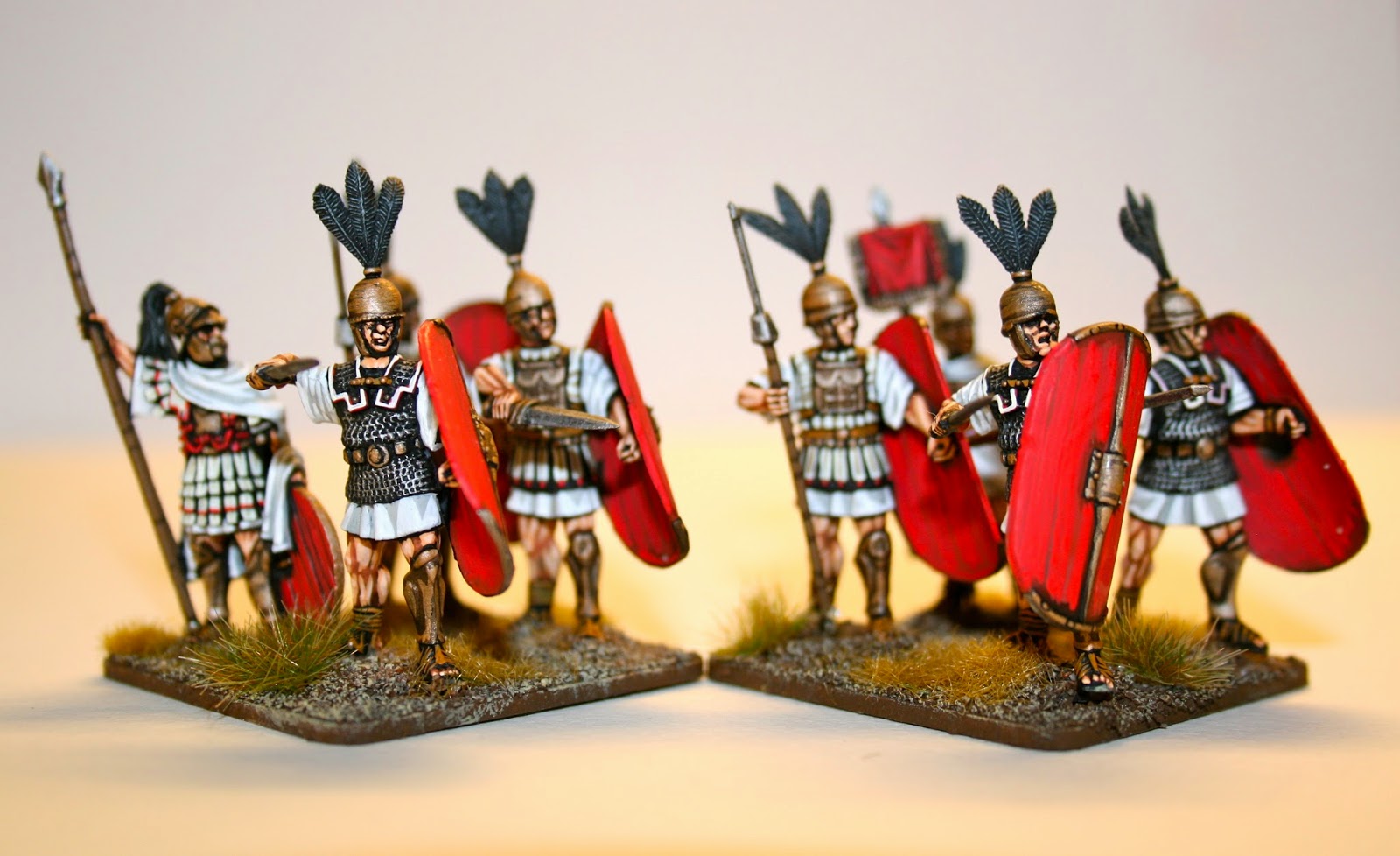Principes - a mix of Agema plastics and metals.
During this the week I finished the first
unit for my Republican Roman Legion – a unit of Principes. I’ve based them on
40x40mm bases to match my friend Björn’s Punic collection. We even found time
for a game this weekend, affording a chance to see the unit in action. Naturally
it got wiped out by some of Hannibal’s Celtic allies, but there you go - all
beginnings are hard.
Variety of Roman Republican troops
Part of the Roman tactical formation called the Maniple (Light troops
skirmishing in the front, regulars in the second line of battle, and seasoned
veterans at the back), the Principes were key troops for both the Camilian army
system (4th-3rd century BC) and later the Polybian during
the Punic Wars.
Originally the men were from the more wealthy classes of the Roman society,
financing weapons and equipment them selves. In most cases you would start out
in the front units, earning your way through experience. So the Principes would be of considerable
battle know-how, thus in effect warriors of the upper class along with the
wealthy Triaii veterans.
This system of soldiers paying their own equipment and who’s position in the
ranks was earned by age, experience, wealth and social status, worked only at
the initial stages of the Roman Republic, when a large class of landowners with
sufficient financial means were accessible to the army.
As time went the structure as well as the
actual Maniple formation tactics would be challenged by the needs of a growing
Roman Empire. Landownership shifted to a few families, and social reforms as
well as army organisational and tactical reforms were needed.
The ranks of the Maniple formation.
Triaii at the back, Principes in the middle, Hastatii and Velites at the front.
Triaii at the back, Principes in the middle, Hastatii and Velites at the front.
The Punic Wars in many ways became the catalysts for this, seeing General Cornelius Scipio (later known as Scipio Africanus) break the coherence of the units, and spread them out on the battle field
to suit his tactical needs more than to follow doctrine. His ideas were very
successful, and with tactics refined by his careful observation of Hannibal’s
battles, he would become the Roman hero of the Punic Wars.
Principes armed with Pilum, Scuta and Gladii.
The restructuring of the Roman Army was undertaken by Gaius Marius in 107 B.C,
and would create the foundation for the later imperial roman army, equipped and
paid by the state – the troops pay was called “solidi” – thus the word soldier.
Another take on the possible colors on clothes and equipment.
Unfortunately the much needed social reforms was not carried out, leading to
civil unrest like the slave rebellion of Spartacus. The further alienation
between the lower classes, now the core of the paid army, and the land owning
roman aristocracy in power, would also be a key factor in the transition of
government from Republic to Imperial dictatorship, with Caesar grabbing power
by entering Rome with his army.
Thank you for reading!





























.jpg)


























